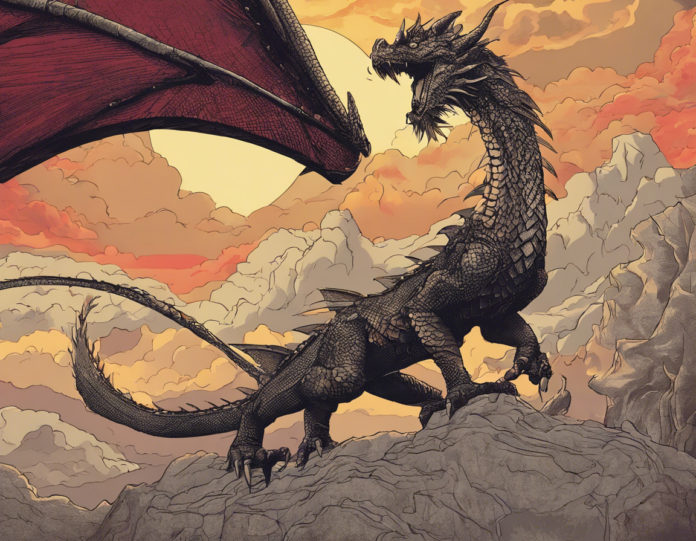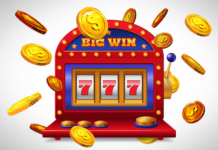Introduction
Throughout history, mythical creatures have captured the imagination of people across cultures and civilizations. These legendary beings, often depicted as a fusion of various animals or possessing magical powers, have been a staple in folklore, literature, art, and popular culture. From dragons and unicorns to griffins and phoenixes, the world of mythical creatures is as diverse as it is intriguing. In this article, we will delve into the realm of mythical creatures, exploring their origins, characteristics, cultural significance, and enduring appeal.
Origins of Mythical Creatures
Many mythical creatures have ancient origins, with roots in the folklore and mythology of different societies. Dragons, for example, are prevalent in the mythologies of Europe, Asia, and the Middle East. In Chinese mythology, dragons are revered as benevolent creatures associated with power, strength, and good fortune. In contrast, European dragons are often depicted as malevolent beasts that hoard treasure and terrorize villages. The similarities and differences in the portrayal of dragons across cultures highlight the diverse interpretations of these mythical beings.
Characteristics of Mythical Creatures
Mythical creatures come in a myriad of forms, each with its own unique characteristics and abilities. Centaur, for instance, is a creature from Greek mythology with the upper body of a human and the lower body of a horse. Centaurs are often portrayed as skilled archers and fierce warriors. In contrast, phoenixes are mythical birds associated with fire and rebirth. According to legend, a phoenix obtains new life by arising from the ashes of its predecessor. The diversity of mythical creatures in terms of appearance, behavior, and powers adds to their mystique and allure.
Cultural Significance of Mythical Creatures
Mythical creatures often hold symbolic significance in the cultures that create and embrace them. Unicorns, for example, are associated with purity, innocence, and grace in Western folklore. The unicorn’s horn, said to possess healing properties, is a symbol of strength and virtue. In Asian cultures, the kirin is revered as a creature of divinity and prosperity, symbolizing good omens and blessings. By embodying various virtues and values, mythical creatures serve as cultural touchstones and sources of inspiration for storytelling and moral teachings.
The Enduring Appeal of Mythical Creatures
Despite the passage of time, mythical creatures continue to captivate and enchant audiences around the world. From classic literature such as J.R.R. Tolkien’s “The Lord of the Rings” to contemporary films like “Harry Potter” and “Game of Thrones,” mythical creatures play prominent roles in storytelling and worldbuilding. Their appeal lies in their ability to evoke wonder, mystery, and a sense of the fantastical. Whether as allies or adversaries, mythical creatures add depth and excitement to narratives, inviting audiences to suspend disbelief and embark on imaginative journeys.
Popular Mythical Creatures in Modern Culture
In modern popular culture, certain mythical creatures have achieved iconic status, resonating with audiences of all ages. Mermaids, half-human, half-fish beings of the sea, have been featured in numerous films, television shows, and works of art. Werewolves, humans capable of transforming into wolves, are staples of horror fiction and urban fantasy genres. Griffins, creatures with the body of a lion and the head and wings of an eagle, are often depicted as guardians of treasure and powerful allies in fantasy adventures. These mythical creatures continue to inspire creativity and spark the imagination of storytellers and audiences alike.
Mythical Creatures in Different Cultures
The depiction and interpretation of mythical creatures vary across cultures and regions, reflecting diverse beliefs, values, and storytelling traditions. In Norse mythology, fenrir, a monstrous wolf, is prophesied to bring about the end of the world during Ragnarok. In Japanese folklore, kitsune, fox spirits with shape-shifting abilities, are associated with intelligence, cunning, and magical powers. By exploring the mythology of different cultures, we gain insight into the ways in which mythical creatures embody cultural norms, fears, and aspirations, enriching our understanding of human creativity and imagination.
The Influence of Mythical Creatures in Art and Literature
Mythical creatures have long been a source of inspiration for artists, writers, and creators across various mediums. From classical sculptures of sphinxes in ancient Egypt to contemporary illustrations of krakens in fantasy novels, mythical creatures have been depicted in a wide range of artistic styles and interpretations. In literature, authors such as C.S. Lewis, Ursula K. Le Guin, and Neil Gaiman have incorporated mythical creatures into their works, weaving rich tapestries of worldbuilding and storytelling. The enduring popularity of mythical creatures in art and literature underscores their timeless appeal and versatility as narrative devices.
Frequently Asked Questions (FAQs)
-
Are mythical creatures real?
Mythical creatures are products of human imagination and folklore, existing in the realm of myth and legend rather than physical reality. -
What is the most famous mythical creature?
Dragons are among the most famous and enduring mythical creatures, appearing in the mythologies of cultures worldwide. -
Do mythical creatures have cultural significance?
Yes, mythical creatures often hold symbolic meanings in the cultures that create and revere them, representing values, beliefs, and aspirations. -
Why do mythical creatures continue to be popular in modern culture?
Mythical creatures captivate audiences with their sense of wonder, mystery, and fantastical allure, serving as timeless symbols of imagination and creativity. -
Can mythical creatures be found in different mythologies?
Yes, mythical creatures are present in the mythologies of diverse cultures, each with its own interpretations and significance.
Conclusion
In conclusion, mythical creatures occupy a special place in human imagination and storytelling, transcending time and cultural boundaries. From the majestic phoenix to the fearsome kraken, these legendary beings embody the wonders of the unknown and the limitless potential of creativity. By exploring the origins, characteristics, cultural significance, and enduring appeal of mythical creatures, we gain a deeper appreciation for the role they play in shaping our collective myths, dreams, and narratives. As we continue to be enthralled by the magic and mystery of mythical creatures, we celebrate the boundless imagination and storytelling traditions that have brought these fantastical beings to life.









